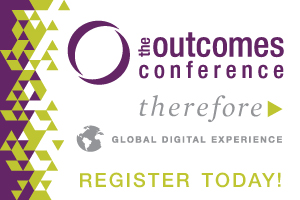
A Force Most Non-profit Leaders Can No Longer Ignore
The Millennials
Most Millennials may not have a lifetime of earnings to start a foundation or simply give away. But many of them engage with non-profits, and likely will have the potential to be loyal donors in years ahead.
Last year, TIME magazine called Millennials the “Me, Me, Me” generation, but numbers tell a different story. The 2013 Millennial Impact Research Report, financed by the Washington, D.C.-based Case Foundation, indicates that 72 percent of Millennials are eager to join a non-profit organization and a little over 50 percent would like to give monthly to a charitable organization.
Non-profit leaders would be wise to engage Millennials. Kiva.org and ThinkImpact are two organizations that understand Millennials’ giving; they operate at the intersection of technology, transparency, and hands-on activity.
Millennials prefer to use their time away work or studying — or both -r- for giving; they want to be a part of non-profit organizations’ impact. Think Impact, a Colorado-based B-corporation, takes Millennials to developing countries, such as Rwanda, South Africa, and Panama, for social innovation “institutes” where they work in rural communities.
Saul Garlick, the organization’s founder and CEO, says the hands-on factor is crucial:
“Millennials are looking for authentic ways to make a difference. That means they want transparency, they want immediacy, and they want to be a part of the critical equal. The more direct the interaction, the powerful the experience. Millennials want to be able to see the change personally.”
Hence, technology is not always enough.
“It’s important to take the conversation beyond the Internet,” says Elizabeth Gore of the United Nations Foundation. A report by the organization found that children become philanthropic as teens and young adults if giving was discussed in the home. Girls, in particular, Gore explains, are interested in social issues, and are inclined to volunteer.
Essentially, more non-profits should consider how to get their Millennial supporters in the field – whether the “field” is Mumbai, Mozambique, or Montana.
Given that there are about 80 million Millennials in the United States alone, they also represent a sizable potential source of revenue. But non-profits have struggled to engage Millennials because they usually do not serve on boards, write big checks, or meet with middle aged members of the local Rotary, Kiwanis or Lions clubs.
While Millennials comprise a significant part of the population, they tend to give in small increments. The Millennial Impact Report of 2012, also financed by the Case Foundation, concluded that while 75 percent of young people donated to causes, most of those donations were under $100. Only 16 percent donated $500 or more.
The report also stated that nine out of 10 dug deep into the organization’s mission before donating. That’s why Kiva took off so rapidly with Millennials.
Bob Harris, author of The International Book of Bob, which looks at microfinance around the world, found that the online microlending platform had branched out to more than 1,500 college and university campuses globally with Kiva chapters and nearly 400 youth groups. The largest is run by Do Something, a non-profit geared at teens and young adults. That Kiva group consists of more than 16,000 Millennials and has loaned over $400,000.
Part of non-profits’ charm for Millennials is their online portals, which let donors see where funds are being channeled. Unlike traditional non-profits that produce direct mail pieces with teary-eyed children, agencies that engage effectively with young people create websites illustrating results: completed hospitals, schools, or wells, or profiles of successful entrepreneurs.
As a result, there are now countless crowdfunding platforms going beyond microfinance, most of which are run by Millennials. For example, Samahope and Watsi finance medical surgeries with small, incremental donations, and The School Fund helps young people with education in developing countries.
Technology has facilitated how Millennials give. Consider:
- Nearly 80 percent of teenagers carry cell phones, according to the Pew Research’s Internet Project, and half of those are smart phones.
- Three in four Millennials use their phones to access the Internet, and more than 80 percent of them use social networking sites, the most popular being Facebook, Twitter, Instagram, Pinterest and Tumblr.
Social networking also has become a leading venue for fundraising, as demonstrated by the recent ALS “Ice Bucket Challenge.” Why did dumping water on one’s head become a global phenomenon and an incredible source of revenue for one charity?
“It’s the perfect storm of why things catch on,” says Wharton Business School Professor Jonah Berger on a recent podcast of “The Torch: The Great Courses.”
“In this case, it’s a message that has some amazing characteristics that cause people to share. Think about emotion, for example. It’s a cause that people care about, but it’s also really surprising to see someone get water poured on themselves. It’s also neat because everyone can riff on it in their own personal take… (T)hat allowed them to show their unique, individual perspective and encourages them to pass it on to others to show who they are and how much they care.”
Berger also offers an essential recommendation for any business or cause: Turn your customers or donors into advocates, that is, get people who like your product or organization to share it and talk about it with other people.
Millennials represent the next generation of consumers — whether you are offering clothes, cars, video games — or programs to help address poverty and injustice. Today’s non-profit leaders who do not engage them are putting themselves — and their organizations — at risk in the future.
###
Atul Tandon is Founder and CEO of the Tandon Institute™, a social sector accelerator, which equips social sector organizations with strategies, solutions and staffing to grow their impact, revenues, public awareness and leadership effectiveness rapidly. He can be reached at: atandon@tandoninstitute.com.
Impact the next generation of Christian leaders.
The Outcomes Mentoring Network – sign up Today!

What is Christian Leadership Alliance?
Christian Leadership Alliance equips and unites leaders to transform the world for Christ. We are the leaders of Christ-centered organizations who are dedicated to faithful stewardship for greater kingdom impact.
Sign up for FREE blog updates.
Upcoming Events
Check back later!




